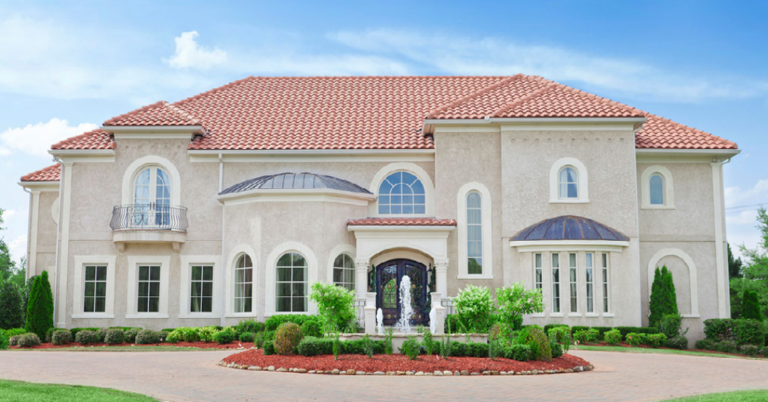Homeowners Insurance – Protecting Your Property and Finances
If you own a home, then you know how important it is to have the right insurance coverage. Homeowners insurance provides financial protection in the event that your property experiences any damage or loss. It can be a lifesaver if something goes wrong and can save you from financial ruin. Let’s take a look at what homeowners insurance covers and why it’s so important.
Detailed Coverage Exclusions
Homeowners insurance policies come with various exclusions that homeowners should be aware of. For example, standard policies typically do not cover flood or earthquake damage. To protect against these risks, homeowners need to purchase separate policies or endorsements. The National Flood Insurance Program (NFIP) offers flood insurance with premiums averaging around $700 per year depending on the flood zone. Earthquake insurance costs vary widely based on location but can range from $800 to $5,000 per year depending on the home’s value and seismic risk.
Additionally, damage caused by mold is often excluded unless it results from a covered peril like a burst pipe. In these cases, coverage might only extend to a specific dollar limit, often around $10,000, for mold remediation.
Maintenance-related issues like caulking, wear and tear, or roof replacements due to aging are generally not covered. Homeowners should budget for regular home maintenance separately from their insurance policy.
Cost Factors and Premium Determinants
The cost of homeowners insurance varies based on several factors:
- Home Value: The higher the replacement cost of your home, the more you can expect to pay. For example, insuring a home valued at $400,000 might cost between $1,000 and $1,500 per year depending on the location.
- Location: Homes in areas prone to natural disasters like hurricanes or wildfires will have higher premiums. For example, homeowners in Florida might pay around $2,000 to $3,000 per year due to hurricane risk.
- Deductible Amount: Choosing a higher deductible can lower your premium. For instance, increasing your deductible from $500 to $1,000 might reduce your premium by 10-20%.
- Claims History: If you have filed multiple claims in the past, your premiums may be higher. A single claim can increase your premium by 7-10% for up to five years.
Optional Coverages and Endorsements
Homeowners can enhance their insurance coverage through various optional coverages and endorsements:
- Service Line Coverage: This covers the cost of repairing or replacing underground service lines, such as water or sewer pipes, that run from the street to your home. This coverage typically costs an additional $30 to $50 per year and can cover repairs up to $10,000 or more.
- Equipment Breakdown Coverage: Protects against the cost of repairing or replacing home systems and appliances, like HVAC units, which can be expensive. This coverage might add $25 to $50 per year to your premium, with coverage limits often around $50,000.
- Identity Theft Protection: This can help cover the costs associated with restoring your identity, such as legal fees, lost wages, and other expenses. The cost of this endorsement is usually around $25 to $60 per year.
Impact of Home Features and Location
The features of your home and its location significantly impact your insurance premiums:
- Older Homes: Homes built before modern building codes may have higher premiums due to the increased risk of damage. For instance, insuring an older home might cost 20-25% more than a newer home with up-to-date systems.
- Proximity to Fire Hydrants or Fire Stations: Homes located near a fire hydrant or station may qualify for lower premiums, potentially reducing costs by 5-10%.
- High-Risk Areas: Homes in high-risk areas, like those prone to wildfires, might require specialized coverage that could double the standard premium. For example, in California’s wildfire zones, premiums can exceed $4,000 per year.
Discounts and Ways to Save
Homeowners can save on their insurance premiums through various discounts:
- Bundling Discounts: If you bundle your homeowners insurance with auto insurance, you can save 10-20% on your premiums. For instance, if you pay $1,200 per year for homeowners insurance and $800 for auto insurance, bundling them could reduce the total cost to around $1,600 per year.
- Security System Discounts: Installing a monitored security system can reduce your premium by 5-15%. This could translate to savings of $50 to $150 per year on a $1,000 premium.
- Claims-Free Discounts: Homeowners who have not filed a claim in several years can receive a discount of 5-10%. Maintaining a claims-free status for five years could save you $500 or more over that period.
Coverage for Common Maintenance and Repairs
Does homeowners insurance cover maintenance issues like caulking, window screen replacement, and slab leak repair?
Homeowners insurance typically does not cover routine maintenance tasks or repairs that result from general wear and tear. Items such as caulking and window screen replacements fall under homeowner responsibility and are not usually covered unless the damage is caused by a covered peril like a storm. Similarly, coverage for slab leaks depends on the cause; if the leak is due to a covered peril, it might be included, but general maintenance-related issues are not.
Special Situations: Mold, Septic Systems, and AC Units
What about specific issues like mold, septic systems, and air conditioning units?
Coverage for mold, septic systems, and air conditioning units varies by policy. Mold might be covered if it results from a covered peril, such as water damage from a burst pipe, but is often excluded if it’s due to neglect. Septic systems and air conditioning units may be covered if damaged by a covered event, but general wear and tear or maintenance issues are typically not included.
Understanding Tax Implications and Deductions
Is homeowners insurance tax deductible?
Homeowners insurance premiums are generally not tax-deductible unless the home is used for business purposes, such as a rental property or home office. In these cases, a portion of the premium may be deductible as a business expense. Homeowners should consult a tax professional to understand how their insurance premiums might affect their tax situation.
Optional and Additional Coverages
What is service line coverage, and why might you need it?
Service line coverage is an optional add-on that protects against the costs associated with repairing or replacing underground service lines, such as water, gas, or electrical lines, that run from the street to your home. This type of coverage can be essential, as repairs to these lines can be costly and are typically not covered under standard homeowners insurance policies.
The Impact of Pets on Homeowners Insurance
How do dog breeds affect homeowners insurance?
Some dog breeds are considered high-risk by insurers due to their size or perceived aggression, which can lead to higher premiums or exclusions in coverage. It’s important for homeowners with dogs to check with their insurance provider to understand how their pet might affect their policy and to ensure they have adequate liability coverage.
Homeowners Insurance: Proactive Strategies and Emerging Trends
When it comes to homeowners insurance, being proactive and informed can make a significant difference in both coverage effectiveness and long-term costs. Beyond understanding what your policy covers, it’s essential to be aware of the broader strategies and emerging trends that impact your insurance experience. This section addresses the overarching themes of managing claims, legal requirements, policy adjustments, the impact of climate change, and making informed decisions about filing claims.
Post-Claim Best Practices
Filing a claim can be a stressful process, but knowing the right steps to take afterward can help streamline the experience and ensure you receive the appropriate payout. Homeowners should document all damage thoroughly with photos and detailed descriptions, maintain open communication with their insurance adjuster, and keep records of all correspondence. Understanding the claims process and your rights can prevent delays and disputes, ensuring a smoother resolution.
Compliance with Legal Requirements
Homeowners insurance is not just a financial product; in many cases, it’s a legal necessity. Mortgage lenders often require homeowners to carry adequate insurance as a condition of the loan, and some states have specific legal requirements for coverage. Staying informed about these legal obligations is crucial, as failure to comply can result in financial penalties or complications with your mortgage. Regularly reviewing your policy to ensure it meets legal standards is a proactive way to avoid potential issues.
Annual Reviews and Policy Adjustments
Your homeowners insurance policy should not be a “set it and forget it” arrangement. As your home changes—whether through renovations, market fluctuations, or new acquisitions—your insurance needs will evolve. Conducting an annual review of your policy allows you to adjust coverage limits, add endorsements, and update your insurer about significant changes to your property. This practice helps prevent gaps in coverage and ensures that your policy reflects your current situation.
The Impact of Climate on Coverage
The impact of climate on homeowners insurance premiums is becoming increasingly significant, especially for properties located in areas prone to natural disasters like hurricanes, wildfires, and floods. Homeowners in these high-risk areas might see substantial increases in their insurance premiums, sometimes by 25-50% or more depending on the specific risks and recent climate-related events.
However, homeowners can take proactive steps to mitigate these costs:
- Strengthening Property Resilience: By investing in home improvements that make your property more resilient to climate-related events—such as installing storm shutters, reinforcing the roof, or using fire-resistant materials—you might qualify for discounts. These discounts can range from 5% to 20% off your premium, depending on the measures taken and the insurer’s policies.
- Bundling Insurance Policies: Some insurers offer discounts when you bundle your homeowners insurance with other policies, such as auto or life insurance. This can provide a 10-20% savings on your overall premium, which can help offset climate-related premium increases.
- Choosing a Higher Deductible: Opting for a higher deductible can lower your monthly premiums, potentially saving you 10-30% on the cost of your insurance. This strategy can be particularly useful if you’re in a high-risk area but have made your home more resilient to damage.
- Taking Advantage of State Programs: Some states offer incentives or subsidies for homeowners in high-risk areas to help lower insurance costs. For example, programs that support retrofitting homes for better disaster resilience can sometimes result in insurance savings or grant opportunities that reduce out-of-pocket costs for upgrades.
Strategic Use of Insurance: To File or Not to File?
While homeowners insurance is there to protect you, filing claims for every minor incident can lead to significant premium increases. It’s important to evaluate whether a claim is worth filing, particularly for smaller issues that may be more cost-effective to handle out-of-pocket. Understanding the potential impact of claims on future premiums can help homeowners make informed decisions and maintain more affordable insurance over time.
References
https://www.sej.org/publications/tipsheet/home-insurance-likely-be-2024-climate-story-near-you
https://www.wlrn.org/business/2024-05-27/as-insurers-around-the-u-s-bleed-cash-from-climate-shocks-homeowners-lose
https://matic.com/blog/2024-home-insurance-predictions/


